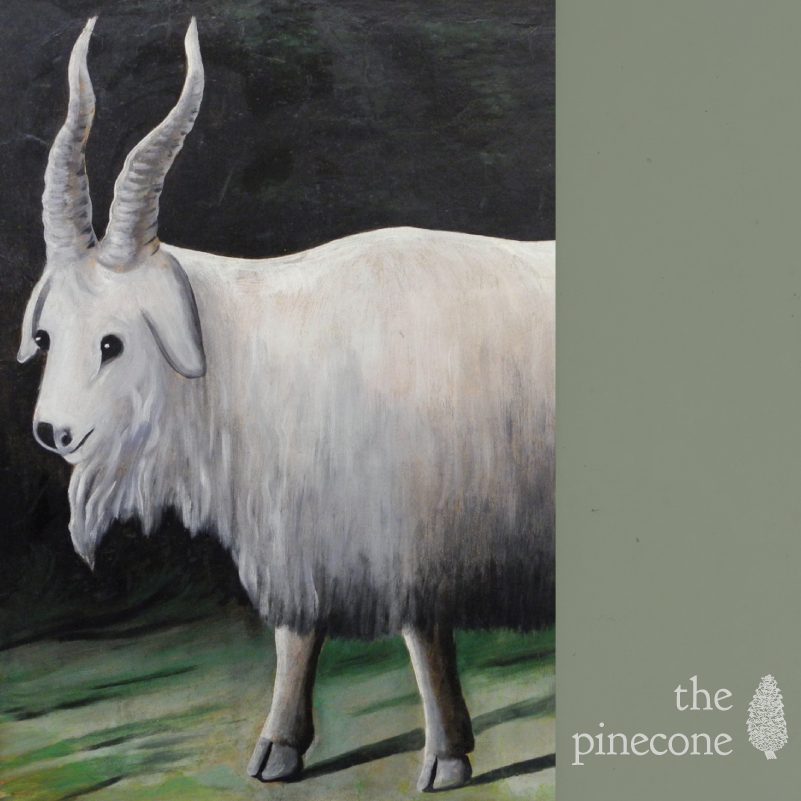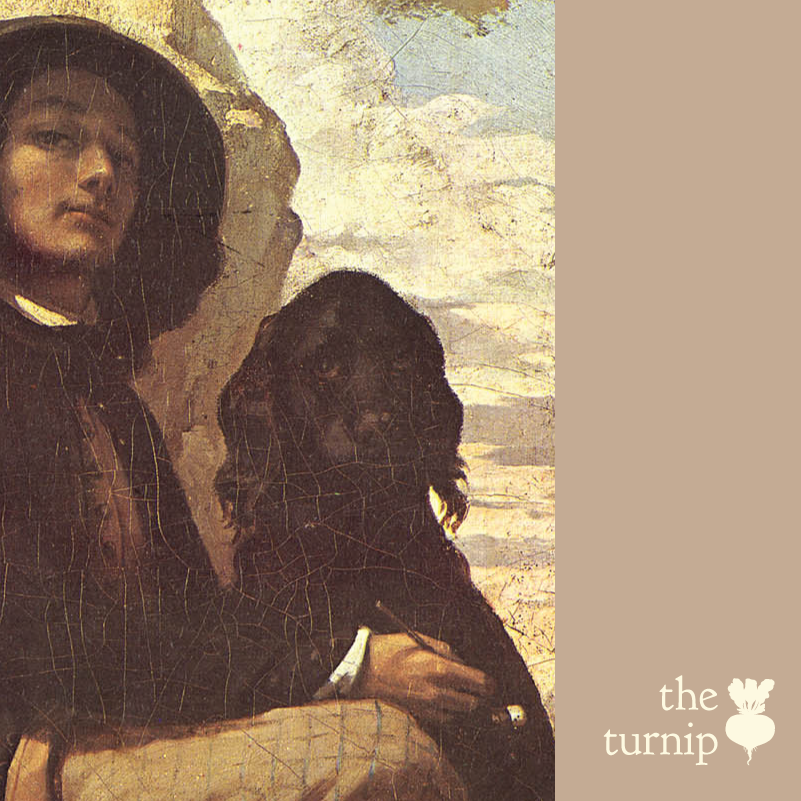Publications
This page lists my publications, including my peer-reviewed journal articles, dissertation, and interactive fiction.
Peer-Reviewed Journal Articles
Some Linguistic Evidence Against Crèvecoeur’s Adoption by the Oneida
Early American Literature, vol. 59, no. 2 (to appear)
ABSTRACT
One of the disputed elements of Crèvecoeur’s biography is the question of whether or not he was ever adopted by the Oneida. In this article, I review the evidence in favor of his adoption and trace the history of this claim. I use a linguistically-driven approach to argue that this evidence is unsuitable, and I provide previously unused evidence to suggest that, although he may have been granted an Indigenous name, he was never really adopted by, or even particularly familiar with, the Oneida. In this way, I aim to encourage the broader consideration of linguistics in interpreting historical texts and understanding the past, while highlighting the importance of Indigenous languages to the study of early American texts.
Phonesthetics and the Etymologies of Blood and Bone
English Language & Linguistics, vol. 25, no. 2, pp. 225–255
ABSTRACT
The etymologies of English blood and bone are obscure. Although their cognates are well represented in the Germanic family, both lack clear cognates in other Indo-European languages. Various explanations of their origins have been proposed, including that they may be non-Indo-European (e.g. Hawkins 1987). Blood and bone, and their cognates, share an initial /b/ with numerous body-related words (e.g. beard, breast, bosom) throughout Germanic. This initial /b/ constitutes a phonestheme. Phonesthemes – ‘recurring sound-meaning pairings that are not clearly contrastive morphemes’ (Bergen 2004: 290) – are present in many Germanic languages, but their role in lexicogenesis is little understood. I suggest that blood and bone were formed by blending the initial /b/ phonestheme with two preexisting lexemes: Proto-Germanic *flōda– ‘something that flows’ and *staina– ‘stone.’ Phonesthetic blending may be a fruitful avenue for future etymological research.
NOTES
In its earliest instantiation, this served as my second qualifying paper (QP2) in graduate school. An updated version of that paper won the 2018 Richard M. Hogg prize from the International Society for the Linguistics of English (ISLE). That version can be read here.
I presented different versions of this paper at two conferences. In March of 2018, I presented at the Word-Formation Theories III & Typologies and Universals in Word-Formation IV conference at Pavol Jozef Šafárik University in Košice, Slovakia. And like all Hogg prize winners, I was invited to present it at the following ISLE conference, which was scheduled to be held in Joensuu, Finland, in summer 2020. Due to Covid, the conference was held virtually in the summer of 2021, where I presented it.
Burning Feathers: A Hint at Hysteria in a Connecticut Witchcraft Case
Folklore, vol. 132, no. 1, pp. 59–71
ABSTRACT
In Stamford, Connecticut, in 1692, the teenage Katherine Branch was tormented by visions, fainting spells, convulsions, and crying episodes. She claimed that she was bewitched. Many neighbours came to see her during her affliction, offering their own suggestions and interpretations of what was happening. One woman, Mrs Sarah Bates, suggested that Katherine’s affliction resulted from a natural illness, and advised that feathers be burnt under the girl’s nose. This article proposes that Mrs Bates supposed that Katherine was suffering from hysteria, or ‘suffocation of the mother’, a medical diagnosis proposed by English physician Edward Jorden in 1603 specifically to address cases of apparent witchcraft.
Kanien’kéha (Mohawk) – Language Snapshot
Language Documentation and Description, vol. 19, pp. 1–8
ABSTRACT
Kanien’kéha is an endangered Northern Iroquoian language historically spoken in what is now the Mohawk Valley of central New York state in the United States of America. Today, it is spoken by about 3,800 people in six communities in upstate New York, USA, and in Ontario and Quebec provinces, Canada: Akwesasne, Kahnawake, Kanesatake, Six Nations, Wahta, and Tyendinaga. The varieties spoken in these communities differ slightly in terms of phonology, vocabulary, and orthography. Robust language revitalisation efforts are ongoing, and the language is of great cultural importance to the Kanien’kehá:ka people.
A Grove of Folk Art on Staten Island: Documenting the Carvings of W. Dixon
Voices: The Journal of New York Folklore, vol. 46, no. 1–2, pp. 3–11
ABSTRACT
In Staten Island, New York, near a derelict building that was once part of the historic Seaview Hospital, stands a group of beech trees carved with human figures and sacred hearts, each in a consistent but highly distinctive style. Most of these trees are signed by a W. Dixon, and two are dated to the early 1930s. These carvings constitute a previously undiscussed collection of folk art in New York City. This article documents these carvings in detail, while advocating for a broader consideration of tree carvings in folklore studies.
NOTES
See my page on dendroglyphs for a photo gallery and more information about these carvings.
This is a Green Open Access article. Published as Pentangelo, Joseph. 2020. A Grove of Folk Art on Staten Island: Documenting the Carvings of W. Dixon. Voices: The Journal of New York Folklore 46(1–2), 3–11. © 2020 by the Board of Trustees of New York Folklore.
Grizzel Greedigut: A Name ‘No Mortall Could Invent’
Names, vol. 67, no. 2, pp. 78–88
ABSTRACT
Matthew Hopkins, England’s most notorious witch hunter, rested his reputation on his experience in confronting the supernatural. To this end, he greatly exaggerated the intensity of his first encounter with an accused witch, Elizabeth Clarke. In Hopkins’ account, Clarke mentioned a familiar named Grizzel Greedigut. But earlier publications show that this did not happen, and that Hopkins appropriated the name from the dubious confession of another woman, Joan Wallis. Today, we have largely accepted Grizzel Greedigut as a bizarre, nonsensical name, but it would not have been all that absurd at the time. Grizzle often described grey animals, and Grissel was a fairly popular name, an abbreviation of Grisilde. Greedigut meant ‘glutton,’ and was the name English colonials used for the American anglerfish. Without knowing more about the name’s historical context, we fall for Hopkins’ cynical ploy to maximize the strangeness of his encounter.
NOTES
I presented this paper at the American Name Society annual meeting in New York on January 5, 2019. An earlier version of this paper was presented at the SQUID 13 conference at the Graduate Center, CUNY, April 27, 2018, as “Grizzel Greedigut: A Familiar’s Pedigree.”
Although the most readily accessible version of Hopkins’ Discovery of Witches is the Project Gutenberg transcription, it is mistranscribed in a lot of places. A good facsimile of the original edition is available on HathiTrust.
The Grant, the Hare, and the Survival of a Medieval Folk Belief
Folklore, vol. 130, no. 1, pp. 48–59
ABSTRACT
In the third book of Otia Imperialia (c.1211), Gervase of Tilbury describes numerous wonders, among them an English belief regarding the Grant, a sparkling-eyed entity shaped like a bipedal foal, whose appearance racing through the streets forewarns of fire. This creature, attested to nowhere but in Gervase’s work, is something of a mystery for folklorists, who have tried to draw connections to other supernatural beings based on its name and its appearance. What has gone overlooked is the fact that the same elements of the Grant’s fire-omen belief existed well into the twentieth century in parts of England, albeit applied to hares. This article suggests that the Grant is an exaggerated hare, while exploring the larger topic of why it is that hares are so often associated with fire in European folklore.
William Fishbough Revealed as Author of ‘The Planchette Mystery’
Notes & Queries, vol. 63, no. 2, pp. 263–265
ABSTRACT
Currently available from around thirty e-book purveyors is a nineteenth-century Spiritualist work entitled The Salem Witchcraft, the Planchette Mystery, and Modern Spiritualism, with Dr. Doddridge’s Dream, generally attributed (as by Project Gutenberg and Amazon.com) to ‘Harriet Beecher Stowe and Phrenological Journal’. This book is a compilation of four independent works previously printed in the Phrenological Journal, published together with added notes by S. R. Wells in May 1872. New editions were printed until at least 1886, yet its proper authors have yet to be fully credited. ‘The Planchette Mystery’ and ‘Dr. Doddridge’s Dream’ are presented without authorial credit, and have been left as such for the last century and a half; thanks to the digitization efforts of Google Books, I have uncovered the author of the former.
Dissertation
360º Video and Language Documentation: Towards a Corpus of Kanien’kéha (Mohawk)
PhD Dissertation, The Graduate Center, CUNY
ABSTRACT
In this dissertation, I apply 360º video to language documentation for the first time. I recorded over 10 hours of 360º video with ambisonic audio, containing mostly naturalistic conversation in the Akwesasne variety of Kanien’kéha (Mohawk), an endangered Northern Iroquoian language spoken in New York State, Ontario, and Quebec. This corpus is both a demonstration of the capabilities of 360º video for language documentation, and a contribution to the documentation of Kanien’kéha. This dissertation includes a brief grammatical description of Kanien’kéha phonology and morphology, a discussion of the interplay between technology and language documentation throughout North American history, an exploration of the significance of 360º video to documentary linguistics, a brief analysis of gesture and intonation in the present corpus, and an assessment of the suitability of ambisonic audio for linguistic analysis.
NOTES
This research was mentioned in “The Race to Document Endangered Languages, Now That We Have the Technology,” an article by Ben Macaulay for Gizmodo in October of 2021. For Indigenous People’s Day that same year, this work was also highlighted in an article on the Macaulay Honors College’s website.
In 2023, it appeared in “Recent Advances in Technologies for Resource Creation and Mobilization in Language Documentation,” an article in the Annual Review of Linguistics by Andrea L. Berez-Kroeker, Shirley Gabber, and Aliya Slayton.
Interactive Fiction

The Pinecone
Entered into the 2020 Interactive Fiction Competition (IFComp)
A breath born of boredom rises in the wintry sky. Hooves and bells approach. The school bus is late.
REVIEWS
Reviews on the Interactive Fiction Database.
Review on The Short Game podcast. (00:49:14–00:56:18) This review is mostly about The Turnip, but The Pinecone is discussed as well.
Review on game-curator.com.
Review on Doug’s World blog.
Review on Through the Shattered Lens blog.

The Turnip
Entered into the 2020 Interactive Fiction Competition (IFComp)
A hole-based economy and a venison-based diet. You and your dog. And a turnip.
REVIEWS
Reviews on the Interactive Fiction Database.
Review on The Short Game podcast. (00:49:14–00:56:18)
Review on Bitterly Indifferent blog.
Review on The Good Old Days blog.
Review on h s gerard’s blog.

